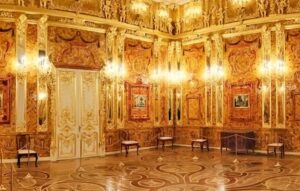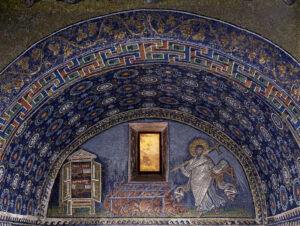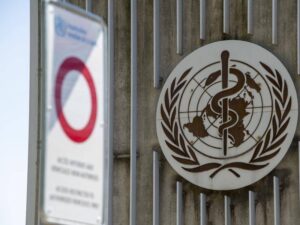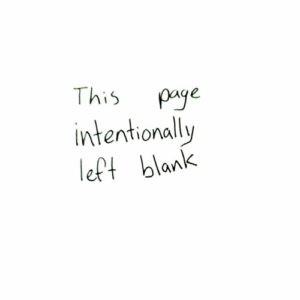It is the winter of 1942. The streets of Melbourne are full of people in strange garb marching up and down the streets. Why, because the Japanese invasion is a hoax, they yell. They want their freedoms back. The so-called picture of Australian soldiers standing in the sun in Singapore was a film set, jigged to appear that they were Australian whereas if you looked closely, they all had native Indian faces. Signs such as “Hang John Curtin” dotted the crowd as well as “Curtains for Curtin”, “Freedom from Rationing”. “Free” is associated with anything, I want.“When do I want it?” The howl goes up. “Now.” The roaring response. Bugger the community or the Commonweal. The Eureka flag is limp. A procession in front of Parliament House. Meanwhile Western Australia has declared neutrality. Then out of the winter sun comes a squadron of Zeros, that lay waste the protesters in the street. At least 40 members of the crowd were dead, strafed in the first run. Fanciful. To make a point – or reinforce a point. Defence is a Commonwealth power. Once the Commonweal has been defined, then Defence is a Commonwealth responsibility. Before Federation, the States raised their own militia. For instance, the NSW Volunteer Contingent was raised to fight in the Sudan with the British Forces. Shortlived, the contingent of 700 men constituting infantry, artillery and ambulance went there and back with barely a scratch, although there are always casualties from exotic diseases.
What is instructive was how confused was the treatment of Boer War veterans and also of sailors who experienced the Boxer Rebellion when they fought overseas during the transition of Australia, the sovereign States, to Australia, the Federation.
The main impact of the Boxer Rebellion on the nascent Australia is the presence of Chinese “souvenirs in the drawing rooms of NSW, Victoria and South Australia”. (Britain accepted 200 men from the Victorian Navy, 262 from the New South Wales Navy and the South Australian gunboat Protector with its complement of 96 officers and men.).
Defence is a no brainer. No Commonwealth would countenance each of the States having its own army. But this was a time when responsibility was confused; it was a time before 1914 when a far-off conflict offered an opportunity for a “boy’s own” adventure.
So why now has this Federal Government shoved the responsibility for Quarantine to the States when it is a clear Commonwealth power enshrined as much as Defence in the Australian Constitution. I have mentioned this matter before. It is the only original exclusive Commonwealth head of power directly related to health. As a result of Morrison’s decision (or should it more accurately be described as indecision) there are mixed messages, when the message should be simple.
Counter the pandemic as a whole-of-nation responsibility. What has happened over the period before the pandemic has been the advance in the sophistication of vaccine development against a suite of “chameleon” viruses for the previous 20 years when they had made tentative raids, only to peter out.
The problem is that the policy option of “masterly inactivity” or else the less flattering “wishing the problem will just go away” creates a vacuum. “Living with the Virus” is a more ambiguous definition of doing nothing. This shift in responsibility when it is done in such a manner is a recipe for chaos.
Hence, we have had all the jurisdictions reacting differently and often, especially in the early phase, commenting with a degree of hubris. “I have fewer cases than you … my system is better than yours” sentiment. Added to this then we had the witch’s cauldron of “experts” brewing up their own cures and policy potions.
At least much of this debate was directed to improving the response. This mixture of ideas and theories has unfortunately allowed the growth of treasonous comments in the name of “freedom”. The person who cries “freedom” while carrying a Trump Flag can be seen to be akin to that mythical 1942 scenario of denial and conspiracy, where the villain at the heart of the conspiracy is the government not the invader.
It stands to reason that when a country identifies a common enemy it is essential to have a common plan – not one with a series of different defences dependent on a local district whim. Just imagine a World War 11 cabinet with the current prime Minister, not John Curtin at his head. Here the prime policy would be to ensure that the ostrich feathers in the plumed hat would be of the finest quality rather than directed towards the conflict. Public relations put ahead of anything, concentrated on making the feathered leader look good; and using fashioning of the wedges of discontent to ensure that each wedge would divide any national response by childishly praising political allies for just that reason. Meanwhile the enemy advances.
The problem is that in any declared war situation, there is a limit to dissension. Between pacifism and sedition? Is there a line drawn between them?
For me, protests are legitimate to a point. Now is a procession in 2019 decrying coal mining wandering through Queensland coal country similar to the recent procession wandering through Ballarat carrying the Eureka flags of rebellious gold miners of the 19th century?
In the first, the invective is coming from the bystanders; in the second, the invective is coming from within the procession. One can always discern the level of legitimacy by interpreting the legitimacy of the contents of the message of the banners being carried. The banners of the latter – those where the invective is coming from within – have been clearly of the latter variety.
Therefore, clearly there are insurrectionists loose in the country aping their counterparts in USA. The politicians are wary; they are not sure that they have convinced the population of the serious situation because, as with any aggression, the majority of the population wants freedom from the invader not the government. Hence the level of vaccination.
Only comparatively recently has government understood this. The initial picture was clouded by the quality of our original weapons. The problem with the early response to the Virus was the Federal government’s shirking of its responsibility allowed a serious public health matter to be reduced to party politics. With politicisation came a false legitimacy for all protests in the name of freedom, however defined, even though the invading force showed that it can manacle the state by closing borders and instilling fear and anxiety in the population. Western Australia has put itself in that situation, where there is only one way out.
However, despite all that, Australia has achieved a remarkable degree of vaccination; the population is now armed against the invader. This situation can be attributed to the fact that the strategic and tactical arms are now being led by a highly competent Chief Health Officer. One of the weakest links in the public health armoury has been given a vice-regal chariot to play round in, and the other State public health grandees have been suitably boxed.
Isolation is a solution to the acute situation where there is a new virus, but not when the situation becomes chronic and all the strategies have been rolled out. Therefore, there should be isolation facilities to match the requirement as best as possible. With almost two years of data, the preferred option for isolation yielding the most effective outcome should be clear, and not be reliant on the superficial excuse for a report that Jane Halton wrote. There is a need for a report that examines objectively how the various quarantine facilities have worked and also examines the effectiveness of shorter isolation periods and how that approach would be best managed.
The problem with the plan to open a community and the actual opening has dissonance, more related to community restlessness than a public health response, and the understandable but nevertheless important distinction between an acute and a chronic situation, especially when the various arms of government disagree, as continues to be the case in Australia.
As one voice has put it bluntly: “If we don’t develop systems to immunise the whole world in three months, instead of three years, we are not going to be successful against these kinds of pandemic threats. Viruses adapt and they change, and unless we develop generalised global immunity more readily, we will always be faced with chasing our tail.”
More so if we tolerate sedition cloaked as freedom and continue to allow public health to be considered as some form of Fabian discourse covered with the sauces of alienation, angst and racist scapegoating.
I hate the word “summit”. Nevertheless, there is room to have collective reflection to determine what happens when omicron is followed by omega; and at the same time have a fringe festival run by somebody seriously zany such as members of the comedic diaspora mingling with those of the conspiracy “comedians” – a dangerous strategy but one where the truly comedic are mingled with the accidental form where the sinister meets the dextrous.
I have a feeling that if these fringe elements attract the vote of those unvaccinated, then perhaps after the elections the politicians will be emboldened to start assembling the charge sheets of these characters, and carefully read what constitutes “sedition” rather than some ephemeral apologia in the name of “free speech”. The scenario depicted in the preface could have occurred if Australia at that time had been submerged in public relations releases.
Things to Watch Over
The other day, the conversation turned to what are the places where you can sit and look out at the image in front of yourself, and never tire of it. I am one of those people, where sitting in an art gallery and contemplating one picture for a long time is not my “go”. Most museums just overwhelm anybody with their volume even though the eclectic nature of the contents often means that one can concentrate on a particular item or items.
This is different. It is the item that you want to sit and gaze at for as long as it takes to absorb the whole visual spectacle – it is where these works of humankind reached ex terra ad caelum.
The problem with many of the items is that the crowd is always moving past the object, or you do not have the time to linger. This was the dilemma of my first encounter with the Amber Room. This has been reconstructed in the Summer Palace outside St Petersburg. It was lost when the Germans removed it during the 872-day siege of the then Leningrad from 1942. However, the Summer Palace was outside the Siege perimeter and thus was captured. The Amber Room, as with many other artefacts, was looted by the kleptomaniac Nazis and transported away, and in the case of the Amber Room, never found.

The Amber Room is a series of panels crafted from six tonnes of amber mounted on gold-leaf walls and adorned with mosaics and mirrors. It was a paean to the material’s beauty and status, originally a gift from Prussia to Russia in 1701. To the Russians’ credit, after World War 11 Leningrad, now returned to its former name of St Petersburg to commemorate Peter the Great’s contribution of turning a swampland into one of the most magnificent cities in the world, largely rebuilt the Summer Palace as it was.
Included in the reconstruction was the Amber Room. The reconstruction based on original images is a sight where the orange spectral range explodes into so many subsets of a solar flare. This is not surprising since Phaëton, the son of the Sun-God Helios, was permitted by his father to drive the Sun chariot. But he lost control, apparently sabotaged by Zeus, and plunged to earth. The short story, as I am not going to recount Ovid’s eye-witness account, as part of their particular “sorry business”, Phaëton’s sisters turned into poplar trees to forever weep golden tears of amber.
Amber is warm to the touch; amber has the property of being magnetised, which was demonstrated to me as a child. Amber is a biological residue of pine resin, resin which stopped flowing and entrapping the feasting insect for all time. The most valuable amber is that which tends to the red edge of the spectrum – the russet colours of autumn as distinct from the yellow of the caged canary. However, when the tableau of mirrors of gilded walls, and amber, amber everywhere, there is time to wonder – and then despite everything, you are moved on in a shuffling queue, despite attempts to linger.
My other visual feast is a place which has not changed for sixteen centuries. St Petersburg, despite a far shorter history, is full of multiple treasures, many of which have been restored by the Russian Government after World War 11. On the other hand, Ravenna, in central Italy, was the centre of the Western Roman Empire for most of the fifth and sixth centuries after Rome was sacked, when the emperor moved from Rome. The lines of succession were confused by the appearance of the Goths invading Spain (Visigoths) and Italy (Ostrogoths). Despite their thrashing the Roman army, it seems that they absorbed the trappings of Rome.
In Ravenna the Ostrogoths under Theodoric established their seat of government in the name of the Roman Empire. It was a somewhat confused line of succession especially as Theodoric was an Arian, a heretical branch of the mainstream Christianity, whose interpretation of a unitary God was at odds with both Orthodox and Western Christendom’s interpretation of the Trinity.
One of the many treasures of Ravenna is the Mausoleum of Galla Placidia, the wife of the Emperor Honorius, who preceded the advent of the Goths. She was never buried there, but for a visitor from the 21st century sitting and gazing at the wonderful decoration of this burial chamber, I wondered why not. Such an explosion of starlight with seemingly the creator’s intention of merging terra and caelum, this burial chamber belies its small size. No superlative thought can adequately describe the sight when one is ushered through the narrow doorway into one of the four transepts centred under the Mausoleum’s dome.

On the ceiling, the night sky is Ravenna blue, a colour unique in the same way the glass in Chartres Cathedral windows is known as Chartres Blue. Here in the Mausoleum, there is a shallow dome depicting a sky in this vivid blue mosaic with white and golden stars. A golden cross is placed at dome’s centre, signalling human redemption, through the Sacrifice on the Cross. The symbols of the four evangelists hover around the cross. This artist was no Arian.
I was supposed to move on after 10 minutes. I stayed for over an hour.
The images of day and night are so intensified in each of these places – one in amber; the another in glass mosaics. No wonder that lyrical genius, Cole Porter, was supposed to have written his song “Night and Day” after visiting the Mausoleum. What would he have written if he had also seen the Amber Room?
Omicron – What is in a Letter?
An appreciation of a recent Boston Globe wit which distils down why we have a WHO.
Perhaps that is bit harsh, but the naming rights for the Virus as it shifts its calling card through the bodies of humankind have raised a few wry smiles, even chuckles elsewhere. This I thought was the best ramble through the alphabetical jungle that I’ve read.
It’s probably safe to assume that classicists are as upset as the general population about the emergence of this latest threat.
But they, at least, can distract themselves with pronunciation debates. “I am not a technical ancient linguist,” the British celebrity historian Mary Beard tweeted: “But I do find it a bit odd that the BBC news is saying omicron with the stress on the first syllable.” Later in the Twitter thread, she revealed that she prefers the stress on the middle syllable — the “mic” part.
“I made a joke early on that we didn’t want to get to ‘Theta’,” One classicist professor joked.
Theta — the eighth letter of the Greek alphabet — is short for Thanatos, in Greek mythology the personification of death. “I might have tweeted about it,” the professor allowed.
Then he started riffing about upcoming alphabet-related naming challenges.
The next letter up, he noted, is Pi. “Do we want to go after geometry?” he asked, quickly moving on to the letter Rho, which would be tricky because “some people will want to trill it,” and as for Sigma, it takes so many written forms that it, too, could be a challenge.
“There’s madness all the way down,” he said cheerfully.
For people not following the lesser dramas of the World Health Organization,(WHO) it might come as a surprise to learn that the decision to identify the variants with Greek letters was not a simple administrative matter, but in fact decided upon after “wide consultation” and a review of “many potential naming systems,” according to a May 2021 announcement.
“WHO convened an expert group of partners from around the world to do so, including experts who are part of existing naming systems, nomenclature and virus taxonomic experts, researchers and national authorities.”
WHO turned to the Greek alphabet to make the names easy to say and remember, and to get away from geographic stigma and discrimination.
But of course, nothing is simple. Considering that the most recent named variant before Omicron was Mu, the letter Nu should have been next, followed by Xi, and then Omicron.
But there was no Nu because it sounds like “new,” naming experts feared we’d end up in some crazy “Who’s On First? Type” situation:
“What’s the new variant called?”
” Nu.”
“That’s what I’m asking — what’s the new one called?”
“Nu.”
Using the letter Xi would probably have landed the WHO squarely in the fraught situation it was trying to avoid by using Greek letters in the first place. Not only is it a common last name, it’s the name of China’s president, Xi Jinping.
 So Omicron it was. But Omicron feels sketchy. How come no one had ever heard of it before? Maybe it’s one of those Clinton-Kamala Harris-Nancy Pelosi-Anthony Fauci-Alexandria Ocasio-Cortez-Lame Stream Media hoaxes.
So Omicron it was. But Omicron feels sketchy. How come no one had ever heard of it before? Maybe it’s one of those Clinton-Kamala Harris-Nancy Pelosi-Anthony Fauci-Alexandria Ocasio-Cortez-Lame Stream Media hoaxes.
The meme machine has been cranking overtime, likening Omicron to an evil Transformer villain (sample Tweet: “He will do whatever is necessary to further the Decepticon’s conquest of the Universe, even if it costs him personal harm.”)
The name sounds like a drug in heavy advertisement rotation on cable news: “Ask your doctor about Omicron (warning: Omicron may cause death and despair).” Or maybe a minor cryptocurrency (oh, wait, it is one, and of course its value briefly soared).
From an educational perspective, Omicron is giving people a skewed idea of the Greek alphabet. As far as many people know, Omicron comes right after the last variant to get a lot of attention, which was Delta.
“Someone said this is the worst way to teach the public the Greek alphabet,” said David Goldstein, an associate professor of linguistics, Indo-European studies, and classics at UCLA.
But at the rate things are going, this isn’t even a problem we’ll have for that much longer. The Greek alphabet has 24 letters, and we’ve already blown our way to number 15.
In June, the journal Nature urged WHO to get ahead of the name game and “consider alphabets from other languages” to have at the ready. “The WHO system’s authors will be aware that theirs is a temporary solution,” the journal intoned.
But alphabets are finite and this pandemic is endless. We need an ever-replenishing source of monikers. Disgraced public officials, maybe?
Swedish Winter
Accompanying a photo which came the other day from Sweden was the following message:
 Black ice such as this is a “fairly rare” occurrence. Necessary conditions include the Greenland blockage, high pressure, rapid drop in temperature and no wind. The result is magic ice as though looking through glass and which provides extremely smooth skating. Our local mare is very reliable in providing solid ice but often not as smooth as this. Hopefully the incoming snowstorm will bypass us so that we can skate for some weeks to come (on the same magic ice).
Black ice such as this is a “fairly rare” occurrence. Necessary conditions include the Greenland blockage, high pressure, rapid drop in temperature and no wind. The result is magic ice as though looking through glass and which provides extremely smooth skating. Our local mare is very reliable in providing solid ice but often not as smooth as this. Hopefully the incoming snowstorm will bypass us so that we can skate for some weeks to come (on the same magic ice).
Now here in Australia in winter we curse black ice, because it cannot be seen on a bitumen tarmac, especially in the early morning, when driving on it. A real hazard, unless you are skating on the local lake
But in Sweden, black ice is a boon as my Swedish correspondent has told me. The “Greenland blockage” was an unfamiliar term to a non-weather person such as myself. Apparently, it is the result of a high-pressure zone over Greenland, often referred to as a “blocking” pattern because it slows the flow of weather systems circulating around the Northern Hemisphere. When present, weather extremes can affect the same areas for extended periods.
Scientists evaluate the presence of a Greenland block and its intensity and duration through an index known as the North Atlantic Oscillation (NAO). A negative NAO is often an indicator of a Greenland block. A positive NAO signals low pressure over Greenland and generally less extreme weather over the Northern Hemisphere continents. So, there it is, Greenland blocked – despite what was said above it seems it has enabled a Swedish upside.
The only question “mare” – not a female horse; not Swedish for lake; or not a Latin “sea”. May be just a “mere” mistake. I am thus not sure.
Mouse Whisper
This item is taken from a 15 year old issue of New Scientist. Apparently a letter arrived from a bank addressed to this woman, which she described as a self-contained communication with no further information required.
Except…on the back of the sheet was written: “This page is left blank deliberately.”
Subtle but self-falsifying proposition? Anything really changed?
